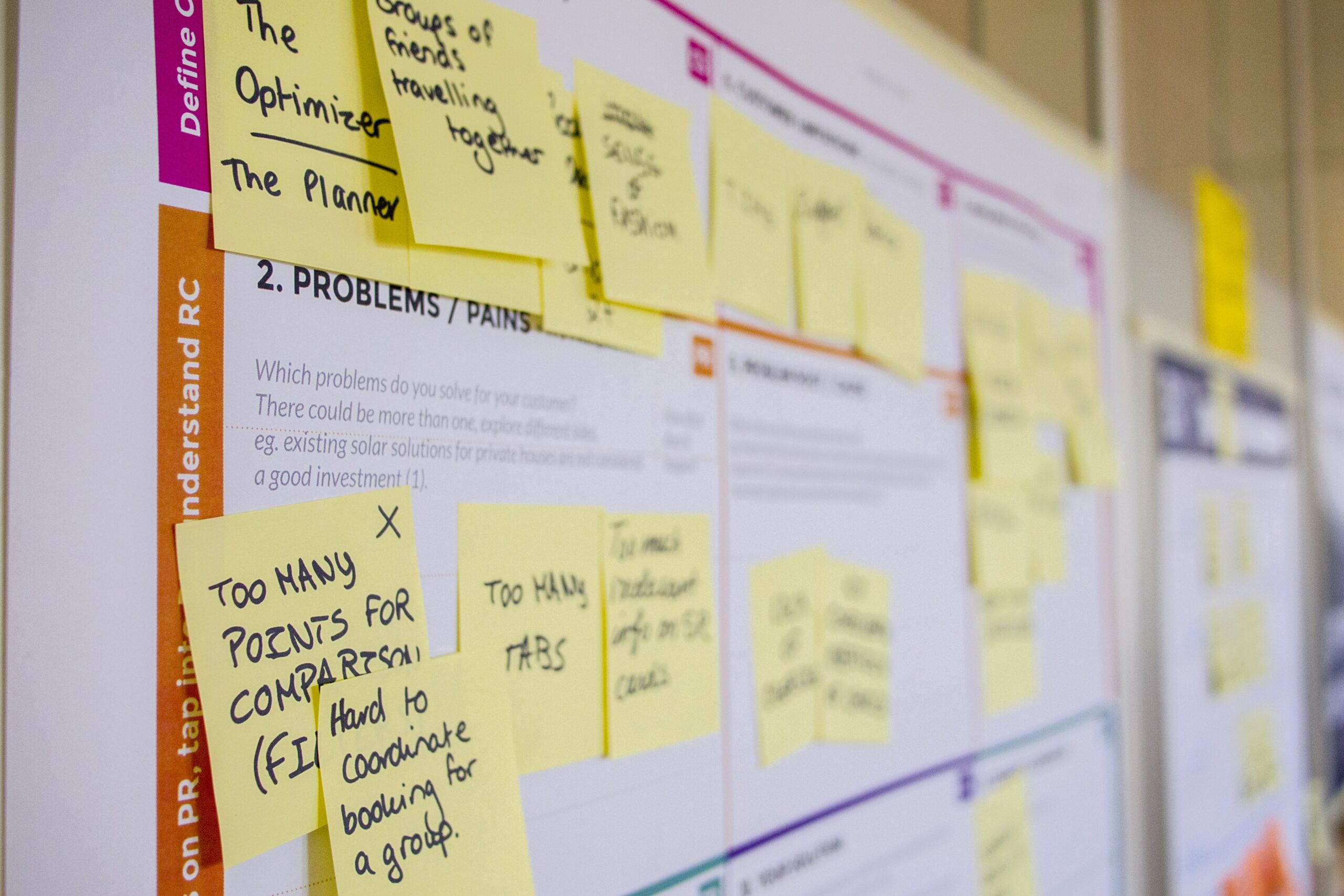Many organizations want a silver-bullet solution for Customer Experience, one quick thing they can do that will fix everything. However, there isn’t one for Customer Experience. It takes constant attention and small, deliberate changes to improve Customer Experience. When faced with this expectation from my clients, I think of what Prime Minister Winston Churchill told his cabinet after the election: “I have nothing to offer but blood, toil, tears, and sweat.”
 People read books and watch TED talks that tell us how people changed this one small thing, and sales went up by 50 percent. While those results make great stories, they are not the norm. Moreover, these tales set unrealistic expectations.
People read books and watch TED talks that tell us how people changed this one small thing, and sales went up by 50 percent. While those results make great stories, they are not the norm. Moreover, these tales set unrealistic expectations.
We discussed this problem with unrealistic expectations and the
silver-bullet-solution mindset on a recent podcast. The reality is few simple changes exist that result in massive permanent advantages. Many Customer Experience enhancements require continual adjustments that produce incremental improvement.
In our podcast called, “Is This One of the Most Important Jobs in Business Today?”, our guests discussed how they wish everyone understood that the area of Behavioral Science is too complex to have a simple solution available for Customer Experience improvement.
Moreover, people often misunderstand science, thinking it has all the answers. However, it is the lack of answers that drives science. The scientific method starts in uncertainty and moves into testing to find answers.
Understandably, we want this non-existent simplicity for the complex, multi-faceted area of Customer Experience. From an evolutionary-psychological perspective, people want things easy. We want to expend as few resources as we can to get the maximum output possible. We want to avoid hard work and conserve energy. It is not a criticism; it’s how human beings are. We look for the most straightforward thing we could do to solve our problems.
Software companies play into this mentality when they imply you can change your world by implementing their product. It bugs me when software companies try to bring that message to Customer Experience. They say, “what you need is journey mapping. Here’s this wonderful piece of software that will do that and improve your customer experience dramatically.” Or, it might be, “implement this measurement system and collect all feedback from different parts of the customer journey. Then you can look at it in real-time.” These things are great, but they are not the silver bullet. It’s not the one thing that you can do that will improve your Customer Experience. It’s one of the many things you should do to improve your Customer Experience. Moreover, you can implement all those things, but if you don’t change the mindset of the people who provide the experience, then people carry on doing the same thing, and nothing will improve.
What Doesn’t Work
Before Beyond Philosophy, I was in corporate life. Our Customer Service department did a customer survey every year. It was my responsibility to implement it, and then we would present the results. The long and short of it is nothing changed in the customer feedback from year to year. So, instead of changing what we were doing to improve our feedback, the senior group decided we should stop doing the survey. It sounds ridiculous, but it’s a true story.
 The single most important thing my company could have done to improve Customer Experience was to change how their people looked at the customer relationship. You could have implemented a computer-based software system that gave them all the results in real-time, but without that fundamental change, my company wouldn’t have done anything with it. Instead, they would think after viewing their real-time, computer-generated feedback, “Well, that was a waste of time and money. Customer Experience doesn’t work.”
The single most important thing my company could have done to improve Customer Experience was to change how their people looked at the customer relationship. You could have implemented a computer-based software system that gave them all the results in real-time, but without that fundamental change, my company wouldn’t have done anything with it. Instead, they would think after viewing their real-time, computer-generated feedback, “Well, that was a waste of time and money. Customer Experience doesn’t work.”
Another example of what NOT to do when trying to improve Customer Experience is adding a Customer Experience department because everyone else is. People think having the department on the directory will be the silver bullet they need to improve Customer Experience. However, if you add Customer Experience to the department list but don’t give them authority or resources to effect any changes, you will not improve. When nothing changes, then you can give them something; two things, actually. You can give them the blame and a pink slip.
There can be no improvements if you have the silver-bullet solution mindset. There is no substitute for making the small, incremental steps to improve things over the long haul. If you are looking for a simple, easy, quick solution, you won’t find it.
Staying Within Bounds
In addition to software companies, science also promotes silver-bullet solution thinking. Scientific studies often show that one small change produces enormous outcomes. People often translate that into thinking if you make one small change, you can expect considerable improvements.
However, scientific findings exist within a set of boundaries. While the study produces enormous outcomes, it only produces them within the experimental environment’s conditions. Outside of those boundaries, it may or may not produce predictable results.
For example, consider the law of gravity. Gravity affects everything all the time. In high school physics class, you learned about Newtonian Gravity, the most fundamental science that exists. However, it has boundaries, too. Suppose you don’t understand where those boundaries are, and you try to apply the fundamental laws of Newtonian gravity to your engineering project. In that case, you’re going to end up with some wrong assumptions. Moreover, you’re going to crash your rocket ship or whatever you are engineering. Therefore, if boundaries apply to gravity, then limitations apply to everything else, including the concepts of the behavioral sciences.
For example, you apply boundaries during Customer Segmentation. A company can’t say all customers will want a product. However, one could predict a group of customers with specific characteristics and needs might enjoy it. The particulars of the segment in my example, which could be related to demographics, geography, or life stage, etc., are the boundaries for my prediction.
It’s not enough to know details about your customers’ segmentation, however. Context is also critical. Different people make decisions in different ways at different times. If you don’t understand the boundaries and context, the danger is that the concept you are using to improve the experience at that moment isn’t going to apply. For example, customers might be tired or distracted when they are making this buying decision. In these states, specific behavioral science theories apply more than others. However, if customers feel energized, a different set of behavioral science theories apply, so we need other ideas to explain what’s happening.
Understanding science requires that we understand the boundaries around its results. Researchers pay a lot of attention to limits, more than you could in real life. In your Customer Experience implementation with distracted customers, you are operating in a different set of boundaries than the researchers were, so the theories won’t work the same way.
What to Do with This Information in 2021
To summarize, here is the one thing to improve your Customer Experience in 2021: Stop looking for the silver bullet. There isn’t one. There’s a lot of hard work in many different subjects that lead to incremental gains that can add up to substantial improvements.
However, if you can define your boundaries, you can try things with specific goals for a particular group of customers and test to see if your improvements work. Understanding those boundaries and the decision-making context is essential.
 Theory can be a bad word in a lot of practical settings. In these situations, people don’t want to talk about ideas; people want tactical action items instead. However, you cannot avoid the realm of theory in customer experience management. For example, you have your views about why people operate the way they do in your experience. You have a theory about why your customers are buying or not buying, as the case may be. However, you don’t know for sure if you are right. Without proof, it is only a theory.
Theory can be a bad word in a lot of practical settings. In these situations, people don’t want to talk about ideas; people want tactical action items instead. However, you cannot avoid the realm of theory in customer experience management. For example, you have your views about why people operate the way they do in your experience. You have a theory about why your customers are buying or not buying, as the case may be. However, you don’t know for sure if you are right. Without proof, it is only a theory.
I would encourage you to realize that all theories, even yours, have boundaries around them. They apply to particular people in specific contexts. So, examine your limitations in the experience and the assumptions that underlie your theories because when you do, you’ll become much more effective at applying those theories and making useful predictions. If you need help, consider an outside resource to help you identify opportunities in your day-to-day activities.
It’s not enough to understand an idea. You also need to understand the boundaries around it because that’s where the power lies. That’s what allows you to move beyond the philosophy and do something with it—along with a lot of blood, toil, tears, and sweat.
To hear more about this idea in more detail, listen to the complete podcast here.
Colin Shaw is the founder and CEO of Beyond Philosophy, one of the world’s leading Customer experience consultancy & training organizations. Colin is an international author of six bestselling books and an engaging keynote speaker.
Follow Colin Shaw on Twitter @ColinShaw_CX

